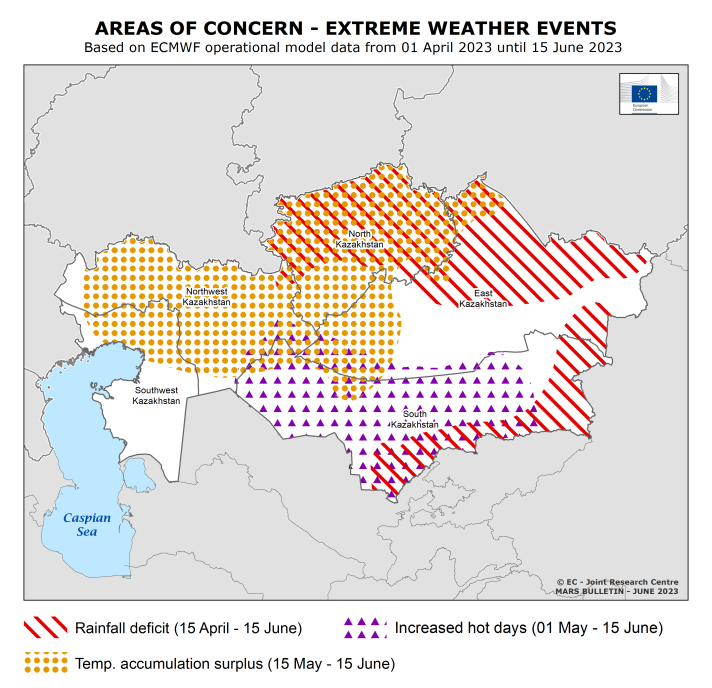
Winter wheat is in better shape than spring cereals, particularly in southern Kazakhstan, and yield expectations are above the 5-year average.
After a slightly milder- and wetter-than-usual winter, since May, daily temperatures have mostly exceeded the long-term average (LTA). The first half of June was extremely hot. Rainfall generally remained below average. The highest precipitation deficit was recorded along the northern and south-eastern borders of Kazakhstan.
Winter cereals present mostly advanced crop development. Leaf area development and biomass accumulation have been above average in the main winter wheat producing region, in South Kazakhstan. Less positive conditions for crops prevailed in the minor winter wheat producing northern areas of Kazakhstan.
In the country’s main spring cereal producing regions, sowing progressed well and finished in time. Soil moisture was below optimal in several regions. Crop emergence was adequate, but canopy expansion and biomass accumulation were hampered by water stress, leading to a below-average yield outlook, particularly in the north and east. Substantial rainfall since mid-June (after the review period) improved soil moisture conditions, but it is too early to fully assess its impacts. Grain maize, which is mostly irrigated in Kazakhstan, is slightly advanced and the yield expectations are fair.
Further information
JRC MARS (Monitoring Agricultural Resources) Bulletins
The latest information about global agricultural production hotspots for countries at risk of food insecurity is available on the JRC’s ASAP (Anomaly hot Spots of Agricultural Production).
Details
- Publication date
- 26 June 2023
- Author
- Joint Research Centre
- JRC portfolios




